Seatbelts in my 62
Posted: December 28, 2008, 5:19 pm
Decided that since Mother Nature wasn't set on Kill today I'd try to get these Wesco performance belts in my truck: http://www.wescoperformance.com.
I bought a set for the F 100 and a set for my 68 fairlane vert..
The belts are around $70 a side plus I sprung for a hardware kit for $9 each side.
All told, with two cars I spent around $300 with shipping. Took 2 hours.
I 1st installed the female part through an existing hole in the floor pan.
If I get a center lap belt later I'll move these inboard a bit and redrill.
I don't really like how the belt kind of gets looped back towards the tank when the seat is slid all the way back.
Optimally the tank gets relocated and these can mount further back.
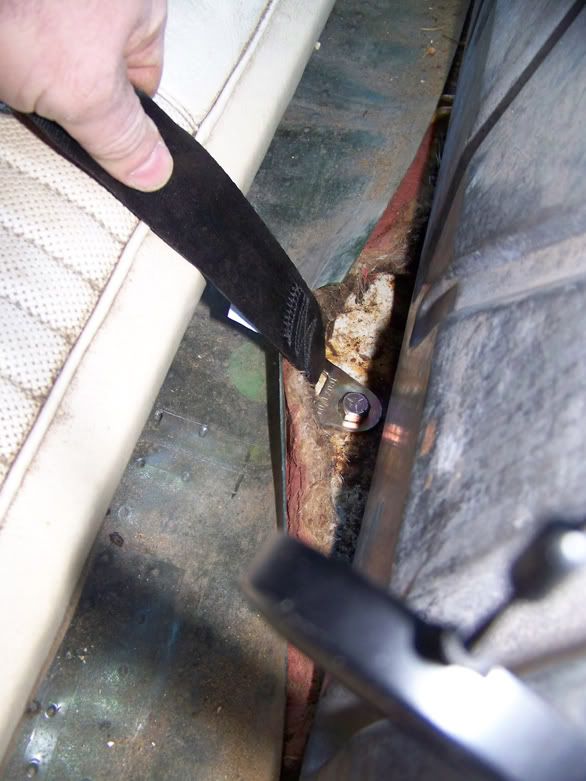
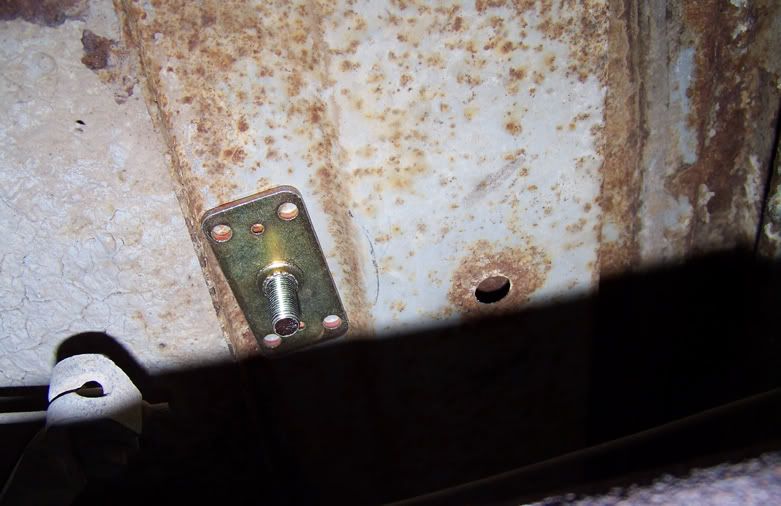
The first go around netted this as a solution.
Think it would rip the tank open in a crash?
Sure ya do.
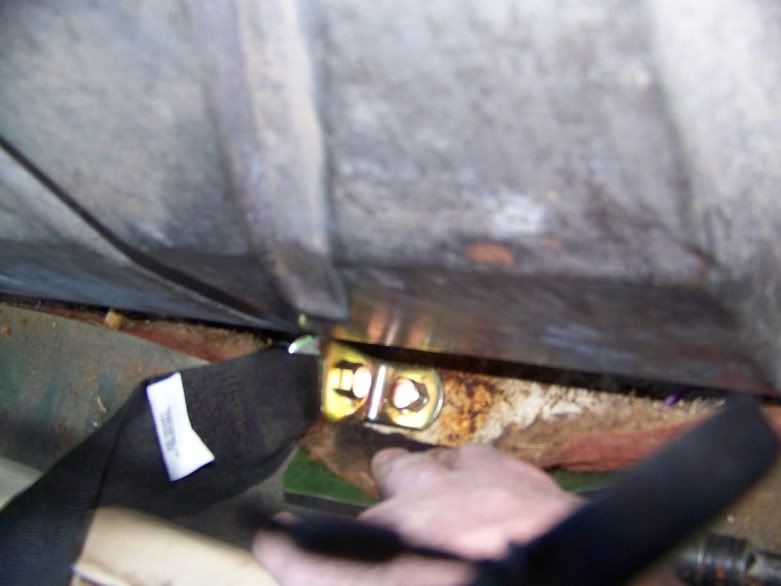
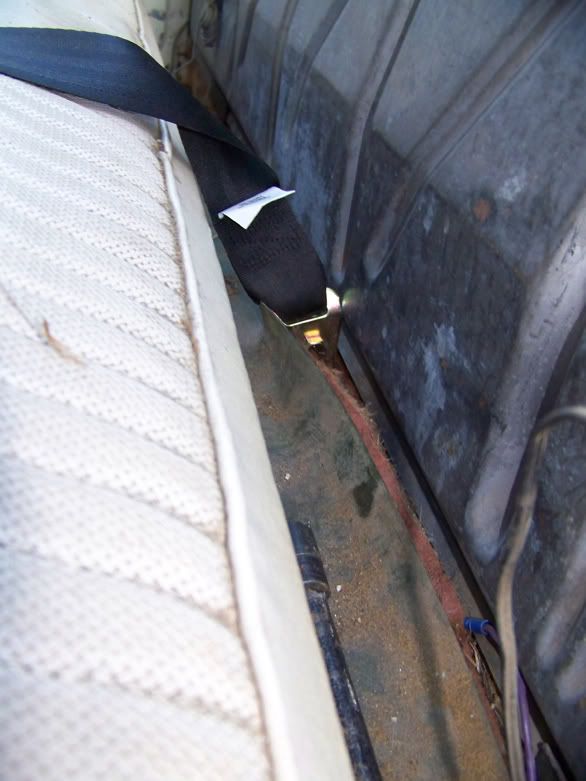
Next up the shoulder restraint.
I kinda eyeballed this thinking about how tall my family is,
what happens if I put in a booster seat for my kid and how much metal
am I using to attach through.
Like every inch of this truck- its battleship thick.
I could chew through most of my newer cars.
Pro tip: Be careful not to let the bit blow through and divot your sailpanel outer skin area on the cab.
I used a shouldered bolt that came with the hardware kit.
It has a shoulder that fits the bigger hole in the bracket so it will swivel.
I backed it up with a threaded plate like the one I used underneath to hold the female end. I may drill a couple holes and spot weld them later when my tank is out.
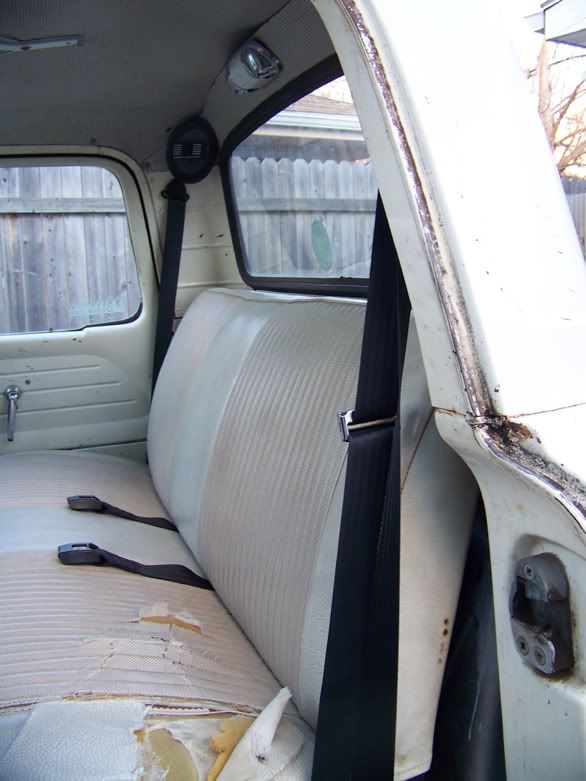
(bracket used under the truck-same as what's behind sail panel)

Finally, I debated how to mount the retractor and dead belt end.
Using one hole isn't an option.
The instructions say not to plus you are putting all your eggs in one
basket so to speak by doing so.
I opted to mount this stuff in shear on the footwell.
The hardware kit has some nice L brackets but the floor boards in my truck are rusty and compromised.
I also thought this may look ugly mounted that way.
This way is OK.
Swapping mounting locations may put the retractor on a flat spot in
the footwell but I think it would cross the belt when buckled.
Maybe if you do this you can experiment.
The dead end of the belt gets the shouldered bolt and a fender washer backer.
Again its all in shear so it should be plenty tough.
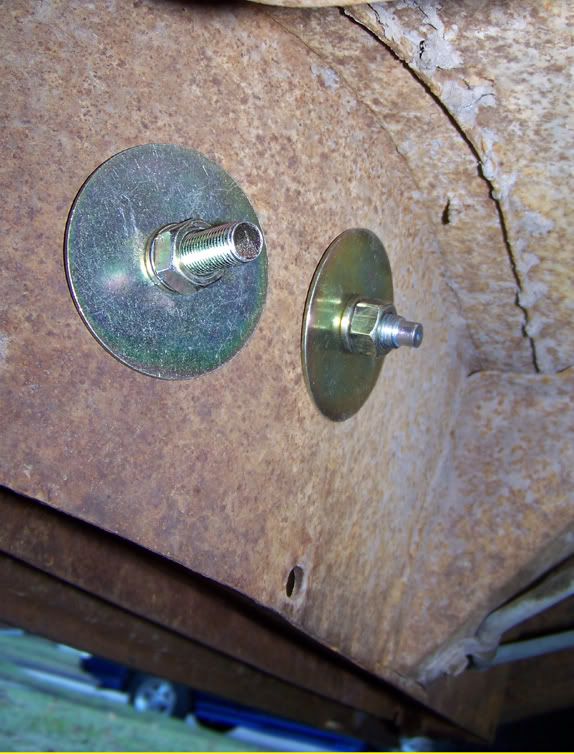

I had these in my 70 Torino I wrecked at 60mph+.
They kept me off the hood and I think I used even smaller fender
washers in the floor.
I did however have 2 factory mount points and used the
OEM hardware in those locations.
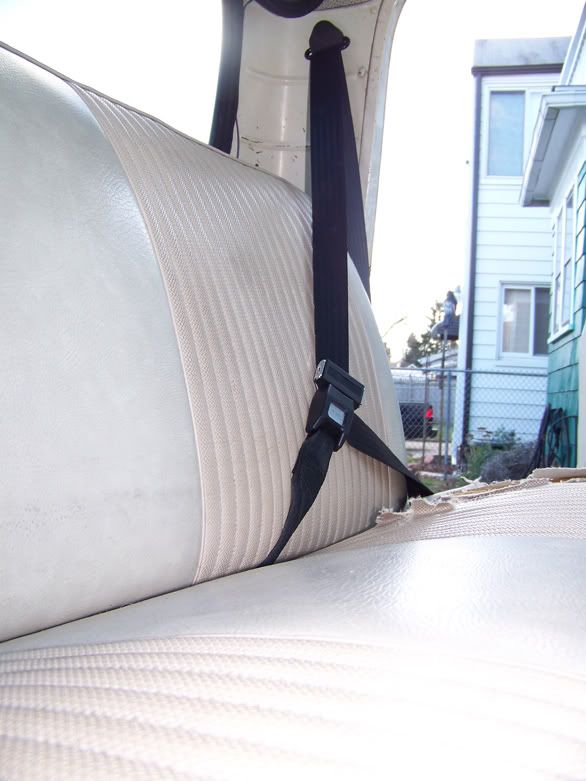
Happy motoring!
*typical disclaimer crap - no clue if this is DOT approved.
In my case its a step up from a steel dash and non collapsable
steering column.
Feel free to critique my engineering and hardware choices.
I bought a set for the F 100 and a set for my 68 fairlane vert..
The belts are around $70 a side plus I sprung for a hardware kit for $9 each side.
All told, with two cars I spent around $300 with shipping. Took 2 hours.
I 1st installed the female part through an existing hole in the floor pan.
If I get a center lap belt later I'll move these inboard a bit and redrill.
I don't really like how the belt kind of gets looped back towards the tank when the seat is slid all the way back.
Optimally the tank gets relocated and these can mount further back.


The first go around netted this as a solution.
Think it would rip the tank open in a crash?
Sure ya do.


Next up the shoulder restraint.
I kinda eyeballed this thinking about how tall my family is,
what happens if I put in a booster seat for my kid and how much metal
am I using to attach through.
Like every inch of this truck- its battleship thick.
I could chew through most of my newer cars.
Pro tip: Be careful not to let the bit blow through and divot your sailpanel outer skin area on the cab.
I used a shouldered bolt that came with the hardware kit.
It has a shoulder that fits the bigger hole in the bracket so it will swivel.
I backed it up with a threaded plate like the one I used underneath to hold the female end. I may drill a couple holes and spot weld them later when my tank is out.

(bracket used under the truck-same as what's behind sail panel)

Finally, I debated how to mount the retractor and dead belt end.
Using one hole isn't an option.
The instructions say not to plus you are putting all your eggs in one
basket so to speak by doing so.
I opted to mount this stuff in shear on the footwell.
The hardware kit has some nice L brackets but the floor boards in my truck are rusty and compromised.
I also thought this may look ugly mounted that way.
This way is OK.
Swapping mounting locations may put the retractor on a flat spot in
the footwell but I think it would cross the belt when buckled.
Maybe if you do this you can experiment.
The dead end of the belt gets the shouldered bolt and a fender washer backer.
Again its all in shear so it should be plenty tough.


I had these in my 70 Torino I wrecked at 60mph+.
They kept me off the hood and I think I used even smaller fender
washers in the floor.
I did however have 2 factory mount points and used the
OEM hardware in those locations.

Happy motoring!
*typical disclaimer crap - no clue if this is DOT approved.
In my case its a step up from a steel dash and non collapsable
steering column.
Feel free to critique my engineering and hardware choices.







